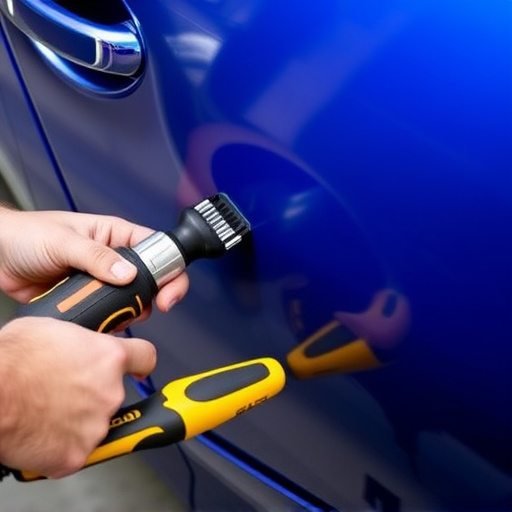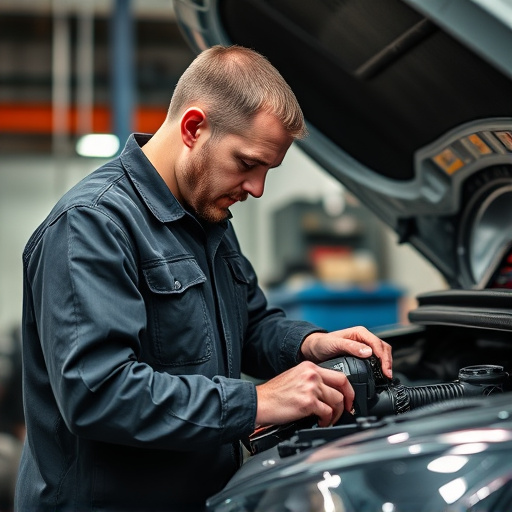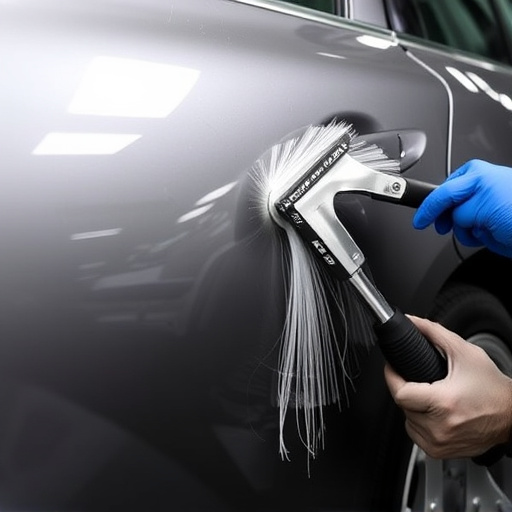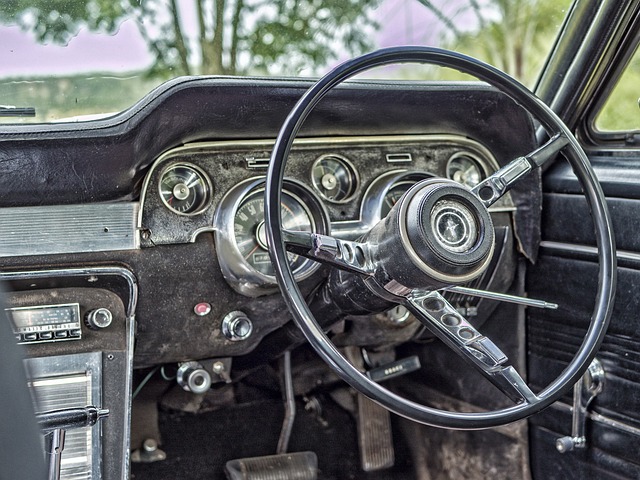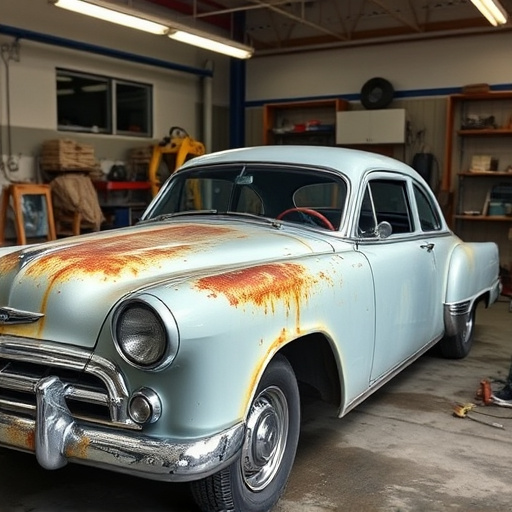The three-stage paint system is a revolutionary automotive exterior finishing method, offering superior durability and aesthetic appeal compared to traditional clear coat finishes. Consisting of primer, color coat, and clear coat layers, it provides enhanced protection against environmental damage and ensures precise color accuracy. This multi-layered approach is ideal for high-end repairs like Mercedes Benz, maintaining professional aesthetics and vehicle value. Widely preferred in automotive repair and tire services, the system enhances durability, protecting paint jobs from chipping, fading, and other damage, making it suitable for personal vehicles and fleet management companies.
“Discover the transformative power of the three-stage paint system compared to traditional clear coat finishes. This article breaks down the intricate process, highlighting its significant advantages in durability, aesthetics, and versatility. From automotive refinishing to industrial coatings, we explore common applications where this technique stands out. Learn why professionals prefer it for long-lasting, high-quality results, and consider adopting this innovative approach for your next project.”
- Understanding the Three-Stage Paint System
- Advantages of a Three-Stage Approach Over Clear Coat Finishes
- Common Applications and Considerations for This Technique
Understanding the Three-Stage Paint System

The three-stage paint system is a comprehensive approach to automotive exterior finishing that offers enhanced durability and a superior finish compared to traditional clear coat only finishes. This system comprises three distinct layers: primer, color coat, and clear coat. Each stage plays a crucial role in protecting the vehicle’s surface and achieving a flawless, long-lasting appearance. The primer acts as a base, preparing the metal surface by sealing it and providing a smooth canvas for the subsequent color coat application.
The color coat, as the name suggests, is where you introduce the desired color and design elements to the car’s body. This layer not only adds aesthetic value but also contributes to the overall strength of the paint job. Once the color coat is applied, it’s topped off with a clear coat, serving as a protective barrier against environmental factors like UV radiation, harsh weather conditions, and chemical damage. This multi-layered approach ensures that auto dent repair and auto glass repair processes can be performed without compromising the integrity of the paintwork.
Advantages of a Three-Stage Approach Over Clear Coat Finishes

A three-stage paint system offers several advantages over clear coat finishes in auto body painting and collision repair. Firstly, it enhances durability by providing an extra layer of protection. This multi-step approach includes a base coat, intermediate coat, and topcoat, each serving a unique purpose. The base coat prepares the surface, the intermediate coat adds strength, and the topcoat delivers the final finish and additional protection against chips and fading.
Moreover, three-stage paint systems provide better color accuracy and consistency. Each stage is carefully applied to ensure precise matching of colors, which is particularly important in high-end repairs like Mercedes Benz repair. This meticulous process results in a more professional and aesthetically pleasing outcome, ensuring that the repaired vehicle retains its original look and value.
Common Applications and Considerations for This Technique

The three-stage paint system has gained popularity across various industries, offering a robust alternative to traditional clear coat finishes. This technique is particularly valued in automotive repair and tire services for several reasons. One of its primary applications lies in vehicle restoration projects, where achieving a perfect, seamless finish is paramount. The multi-layered approach allows for greater control over the final color and texture, making it ideal for correcting imperfections or reviving classic cars.
Moreover, this method enhances durability. Each stage builds upon the previous one, creating a strong bond that protects the paintjob from chipping, fading, and other environmental damages. This makes it an excellent choice for both personal vehicles and fleet management companies looking to maintain their assets’ aesthetic appeal and value over time. In automotive repair, where precision and longevity are key, the three-stage system provides a reliable solution, ensuring vehicles not only look their best but also stand the test of time, much like how tire services prioritize durability in their products.
The three-stage paint system offers significant advantages over traditional clear coat finishes, particularly in terms of durability, color accuracy, and maintenance. By employing a base coat, intermediate coat, and topcoat, this system provides enhanced protection against chips, scratches, and fading. The result is a vibrant, long-lasting finish that requires less frequent reapplication. Whether for automotive, industrial, or decorative projects, the three-stage approach ensures superior performance and aesthetic appeal, making it a preferred choice for those seeking robust and visually appealing coatings.


